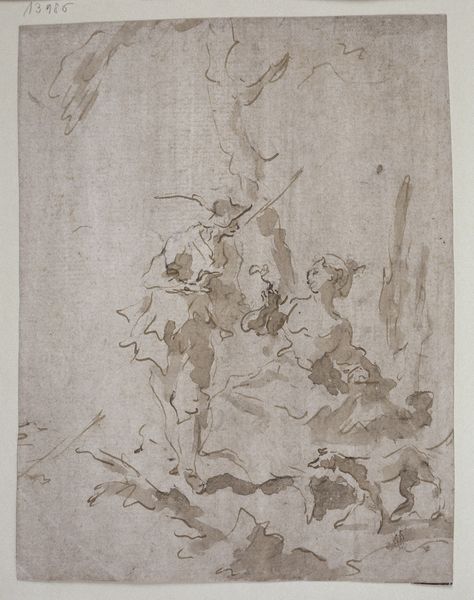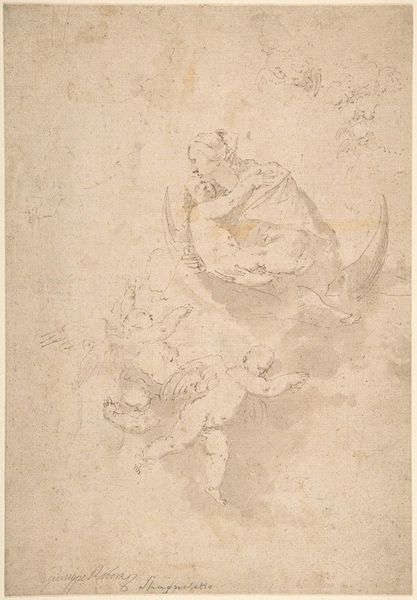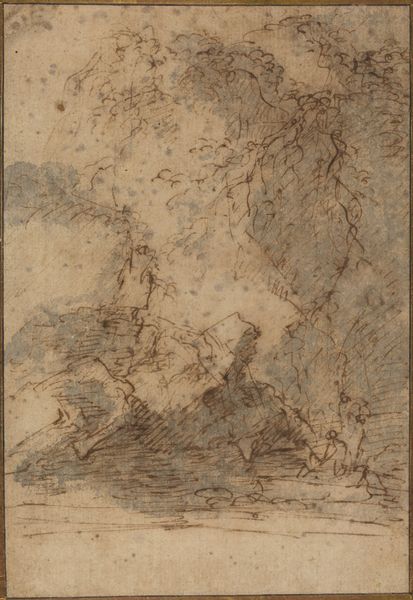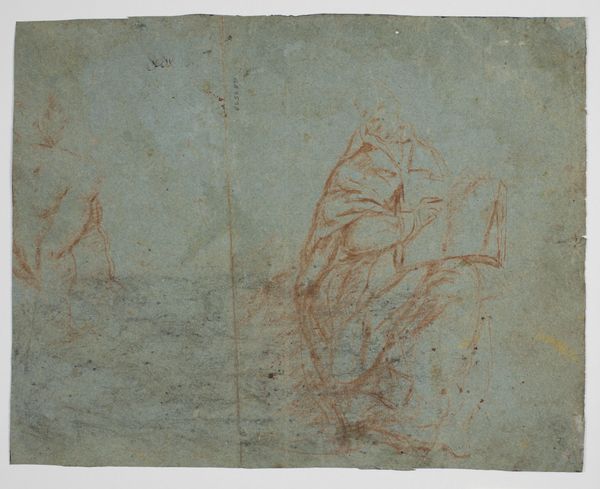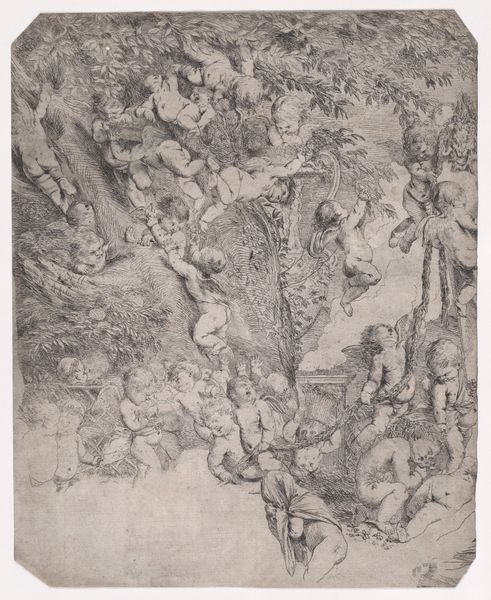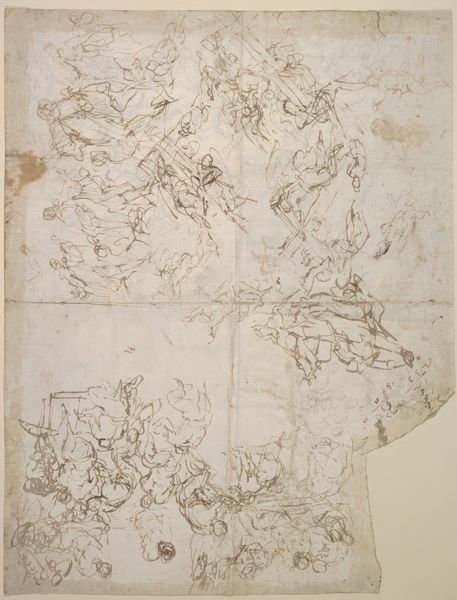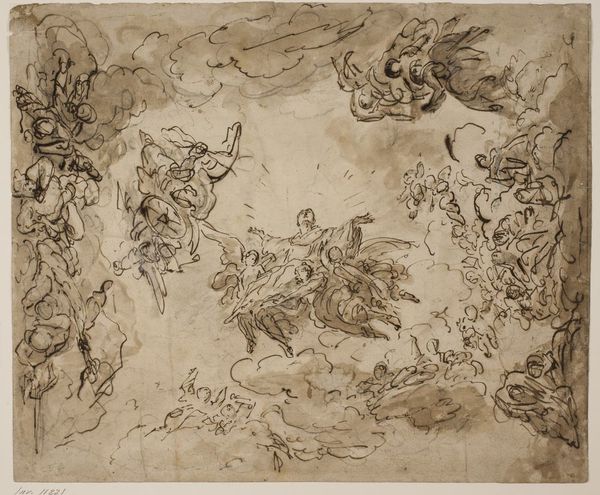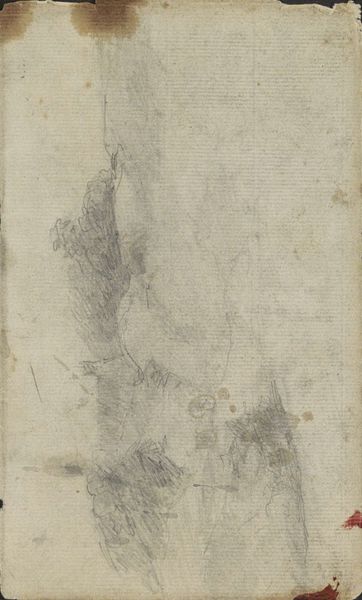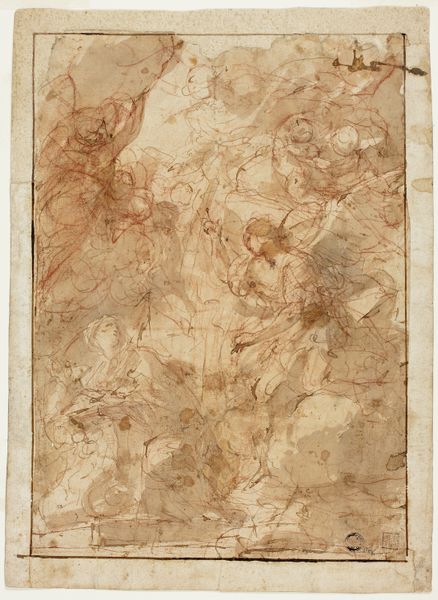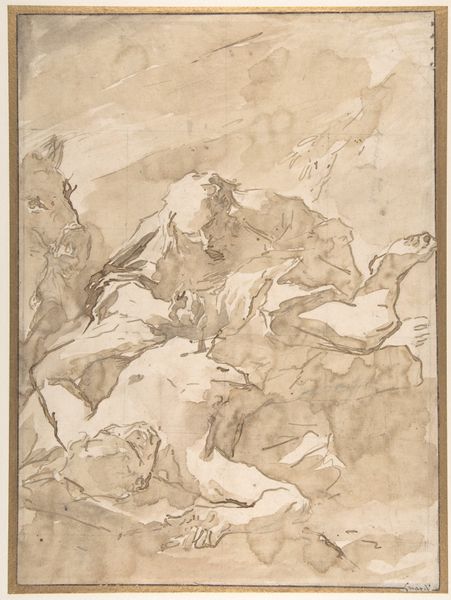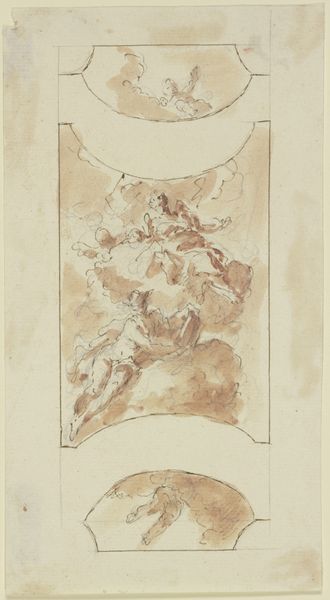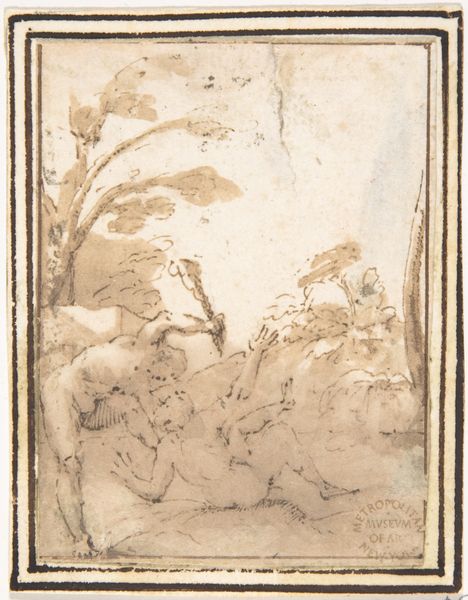
drawing, watercolor, ink, indian-ink, chalk
#
portrait
#
drawing
#
charcoal drawing
#
watercolor
#
ink
#
indian-ink
#
chalk
#
15_18th-century
#
genre-painting
#
watercolor
#
rococo
Copyright: Public Domain
Curator: Before us, we have Francesco Guardi’s “Two Drinking Men,” a work dating back to the mid-18th century, between 1740 and 1770. It’s a beautiful drawing, employing chalk, watercolor, ink, and Indian ink. Editor: There’s a distinct feeling of libertine revelry radiating from this work. A world of playful excess hinted at with minimal strokes. I feel invited into their boisterous celebration, but also kept at arm's length, like an imagined performance or dream sequence. Curator: Indeed, Guardi captures the essence of Rococo art—the spontaneity, the lightness of being. And this seemingly simple drawing is rich in symbolism. Notice how their slightly exaggerated, clown-like appearances hint at theatrical archetypes. What cultural messages can you identify? Editor: What immediately strikes me is the absence of women. While masquerade and theatrics are apparent, so too is a gendered dimension in the social license to indulge, with a history of male authority. It makes me wonder, were these images produced for private display, to what extent were women allowed to partake? And, to whom were these kinds of behaviours and spaces accessible at the time? Curator: These figures resonate with characters from the Commedia dell'Arte, those stock characters full of humor and, yes, perhaps also critique. These figures aren't simply celebrating; they're enacting roles, archetypes reflecting and perhaps poking fun at Venetian society. We recognize these scenarios across many cultures even today: celebration is an archetype and a collective phenomenon, so it resonates universally. Editor: But even universal experience isn't apolitical. While celebration is a widespread concept, these characters' status, attire, and behavior reflect power structures. The exuberance may indicate social anxieties surrounding gender, class, and decorum that, while maybe subtly represented, reveal tensions brewing beneath the surface of Venetian society at the time. Curator: A vital counterpoint that allows us to question unstated social hierarchies. Editor: This deeper, richer view challenges a simple idea of revelry. It reminds us that even joy is embedded in historical context, laden with symbolic importance and potentially subversive critique. I’ll hold a different view to seemingly light, jovial celebrations after this consideration! Curator: Absolutely, seeing through the symbolic brings so much more to how one understands visual media, past and present!
Comments
No comments
Be the first to comment and join the conversation on the ultimate creative platform.
